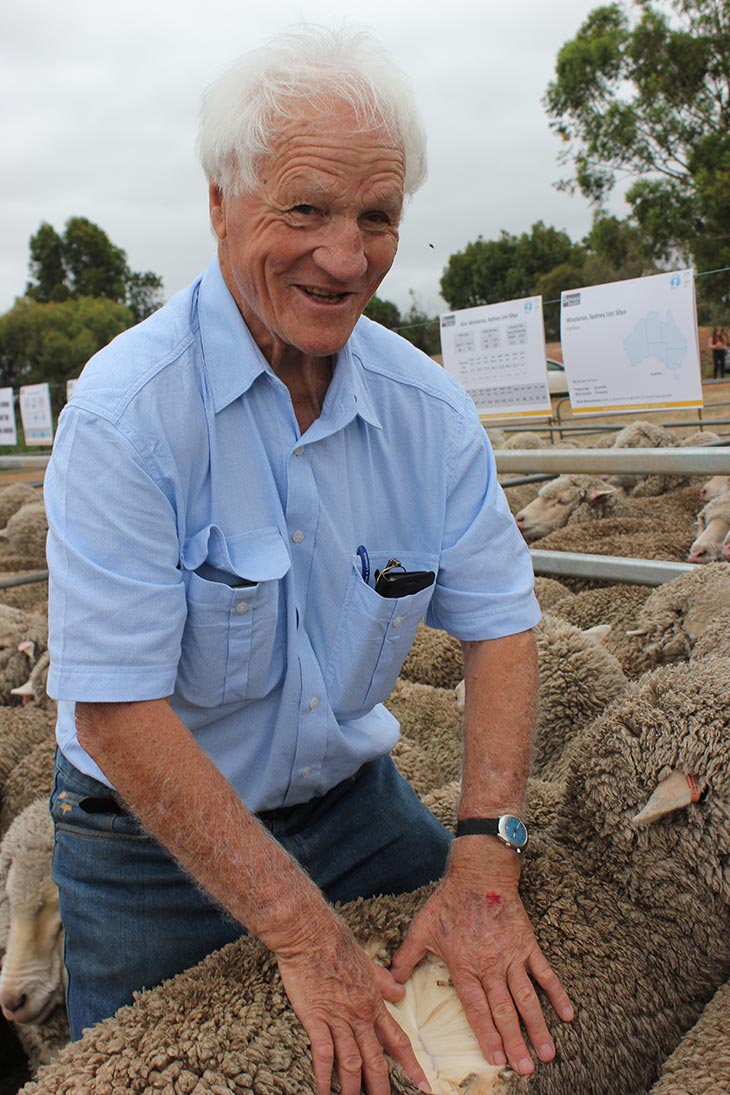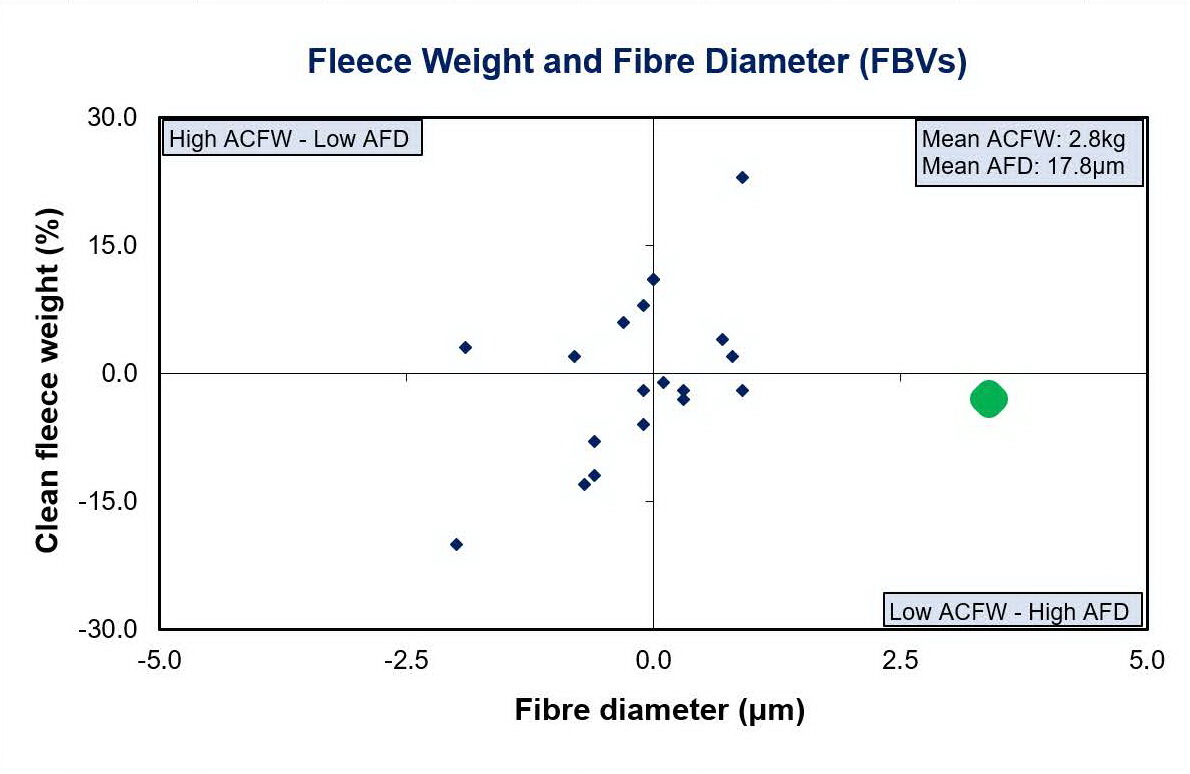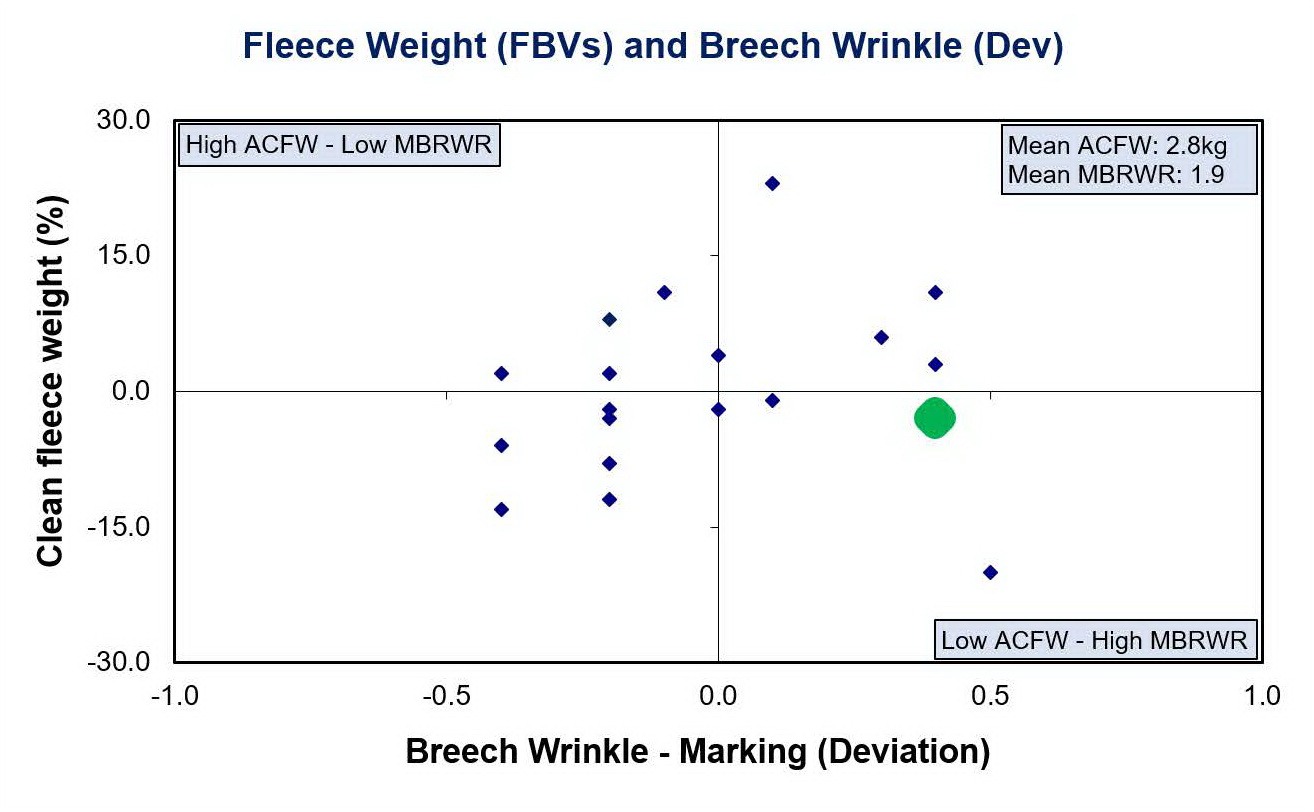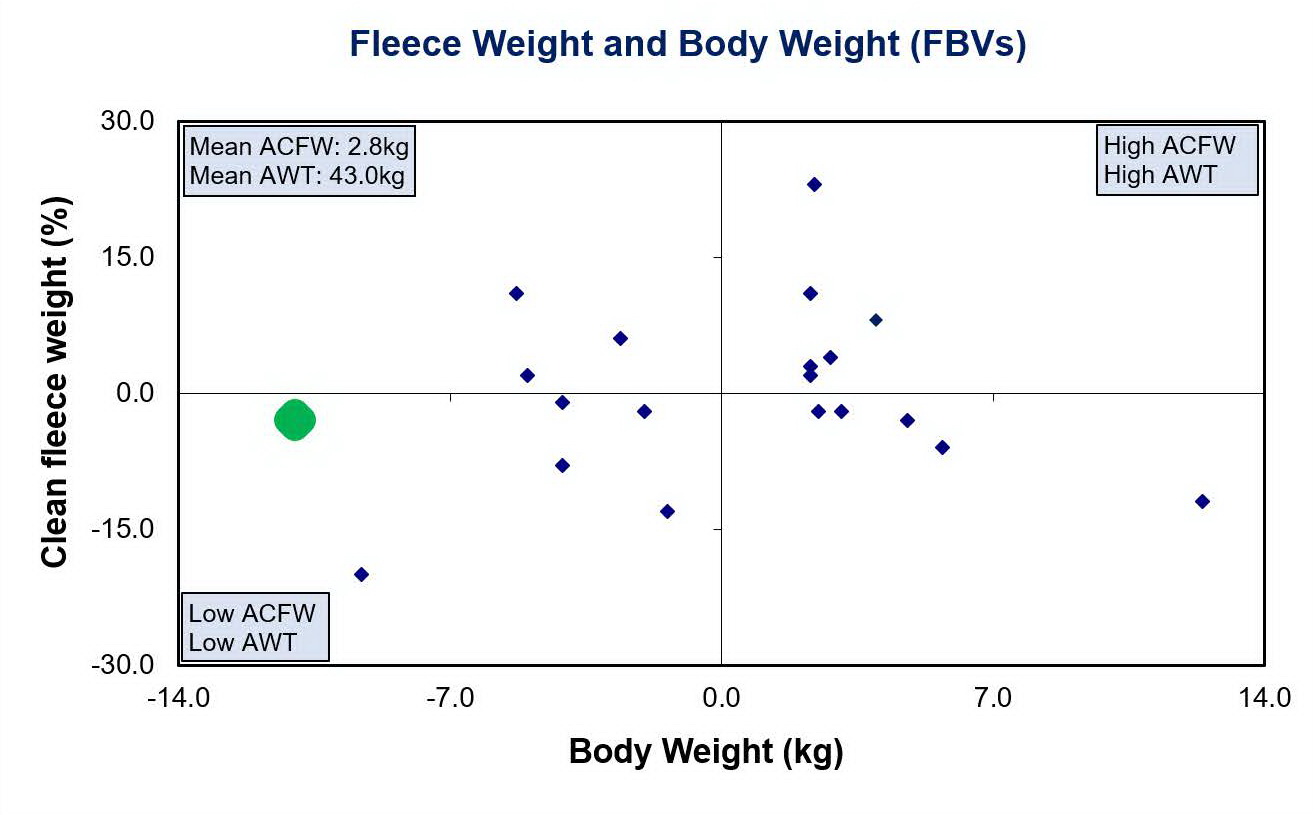
Peter Walker, whose family owned the rams that provided the semen 50 years ago, inspecting the progeny.
The progeny of 50-year-old frozen ram semen have been assessed for visual, wool and carcase performance and trialled against contemporary Merino sires currently in use in the industry, at Balmoral Breeders' 2018 Merino Sire Evaluation trial in Victoria.
The Balmoral Breeders' trial used artificial insemination (AI) to join 20 sire entries for a 2018 drop of progeny. One of these entries came from semen frozen in 1968 at the University of Sydney when the science of using frozen semen was being developed by Dr Steven Salamon. It is understood to be the oldest semen in the world, of any species. The entry costs of the 50-year-old semen was funded by AWI.
The semen was a mix from four rams including a purchased sire from Boonoke (1959 drop), another from Merryville (1963 drop) and a son from both rams out of Woolaroo stud ewes. The rams were owned by the Walker family of Ledgworth, Yass NSW (formerly 'Woolaroo').
The other 19 sires used in the Balmoral trial were rams currently used in the industry and nominated by Merino breeders to be benchmarked against other genetics. This trial combination of current and historical genetics has allowed the direct comparison of genetics that are more than 50 years old to current industry sires.
SEMEN VIABILITY
The 50-year-old semen was used to AI 56 Merino ewes. Of these, 34 conceived achieving a 61% pregnancy rate. At pregnancy scanning, 46 foetuses were scanned giving a 82% scanning rate.
The overall trial averaged a pregnancy rate of 59% and a scanning rate of 80%. So it seems as though the 50-year-old semen viability was not impacted by its long-term storage and it was as good as the day it was frozen!

REPORT RESULTS
Assessment of the trial progeny was completed under the Australian Merino Sire Evaluation Association (AMSEA) framework. Assessment commenced at lamb marking with breech traits being scored, then visual classing and wool measurements were undertaken at the Post Weaning and Adult stages plus carcase measurements collected at the Yearling stage.
Below is a snapshot of the Balmoral Breeders' 2018 Merino Sire Evaluation trial results with the 50-year-old semen results highlighted in green. Fleece weight, fibre diameter and body weight are reported as flock breeding values (FBVs) and breech wrinkle as a deviation (Dev) from the average score of the drop.
ADULT CLEAN FLEECE WEIGHT (ACFW) AND ADULT FIBRE DIAMETER (AFD)
The 50-year-old genetics (green marker) are significantly higher in fibre diameter than the other sires, whilst being just below average for fleece weight.

ADULT CLEAN FLEECE WEIGHT (ACFW) AND MARKING BREECH WRINKLE (MBRWR)
The 50-year-old genetics (green marker) carry more wrinkle than most of the other sires.

ADULT CLEAN FLEECE WEIGHT (ACFW) AND ADULT BODY WEIGHT (AWT)
The progeny carrying the 50-year-old genetics (green marker) are the smallest animals in the trial.

Visual scores for fleece rot, wool colour, wool character, body wrinkle, breech wrinkle and breech cover indicate that there has been significant progress in these traits over the past 50 years. This progress can be seen when comparing the scores of current genetics to the average for the four sires from the 1960s.
The 2018 Balmoral Breeders' trial was hosted by the Mark Bunge and his family on 'Kooringal' near Coleraine in Victoria. Mark was eagerly anticipating the results of the trial as he had noticed a significant difference in the paddock.
"The visual difference in the progeny was obvious, so it is interesting to see that the measured results confirm the productivity differences between this group and other entrants," Mark said.






